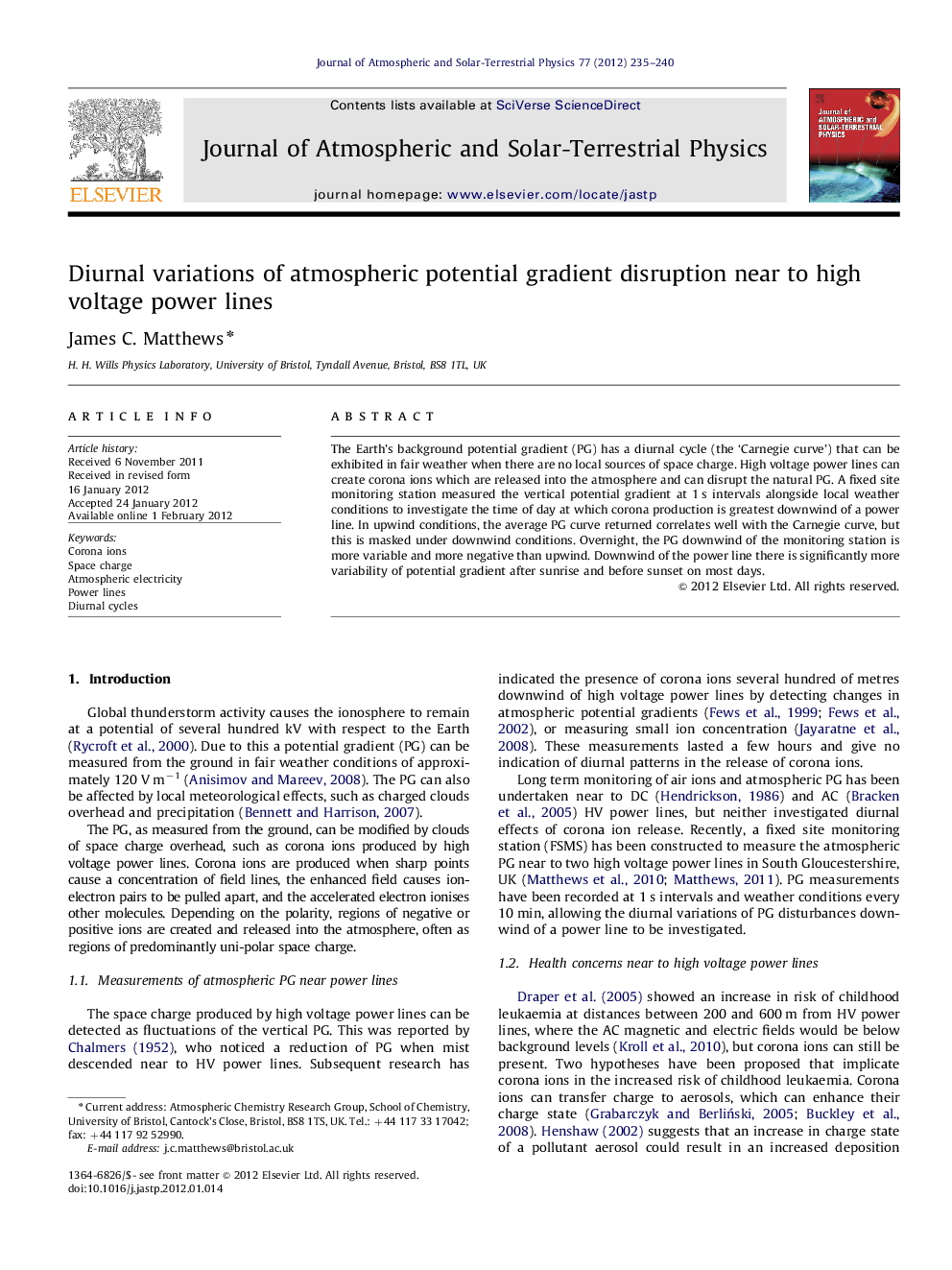| کد مقاله | کد نشریه | سال انتشار | مقاله انگلیسی | نسخه تمام متن |
|---|---|---|---|---|
| 1777002 | 1523653 | 2012 | 6 صفحه PDF | دانلود رایگان |

The Earth's background potential gradient (PG) has a diurnal cycle (the ‘Carnegie curve’) that can be exhibited in fair weather when there are no local sources of space charge. High voltage power lines can create corona ions which are released into the atmosphere and can disrupt the natural PG. A fixed site monitoring station measured the vertical potential gradient at 1 s intervals alongside local weather conditions to investigate the time of day at which corona production is greatest downwind of a power line. In upwind conditions, the average PG curve returned correlates well with the Carnegie curve, but this is masked under downwind conditions. Overnight, the PG downwind of the monitoring station is more variable and more negative than upwind. Downwind of the power line there is significantly more variability of potential gradient after sunrise and before sunset on most days.
► Atmospheric potential gradient was measured for a year near two HV power lines.
► Upwind, the averaged 24 h cycle averaged to the Carnegie curve.
► Downwind, the potential gradient is affected by corona ions produced by the power line.
► Overnight, the potential gradient downwind is more negative and more variable.
► Potential gradient was more variable after sunrise and before sunset.
Journal: Journal of Atmospheric and Solar-Terrestrial Physics - Volume 77, March 2012, Pages 235–240